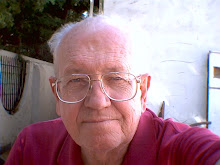Blacks in America
(Facts only found in By-Bye Sweet Liberty.)
Intentional misinformation pervades much of today’s popular culture. When it comes to race, a single grain of truth is hard to find. At some point, an accusation of racism will surface, and rational communication will break down.
First is the part of American history that gave us slavery. Then there is purposeful smog and obfuscation concerning how and why we got rid of slavery. Finally, the tools of the old slavers are still used, here. Now! And few are outraged.
We Americans are pretty clean on this topic, but you’d never know it.
Typically, in the popular culture we hear a statement such as, “Oh, well, Thomas Jefferson and George Washington were slave owners, y’know.” Or, “America has nothing to be proud of; this country was built on the backs of slaves.” Even more subtly, but still offensive in my view is the idea that it was forces outside the United States that ended slavery in the United States. The movie Amazing Grace depicts William Pitt and William Wilberforce bringing about the end of slavery in England. No reference is made to abolitionists in the northern colonies of what had become the United States.
In reality, there was plenty of abolitionist activity on both sides of the Atlantic Ocean. In addition to Pitt and Wilberforce, the Yankees deserve credit here. Credit needs be given to abolitionists in the colonies. As a matter of fact, there existed, along the border between North and South what was called “the Underground Railroad.” This was a network of ordinary white citizens who bonded in secret to provide for the escape of slaves from the southern states. They maintained hiding places, with bedding and food, until the escapees could move farther from danger.
Amazing Grace (shown in select theaters in 2007) tells the story of how Pitt and Wilberforce maneuvered laws through Parliament ending the commercial shipment of slaves on British shipping early in the 19th century (about 1807). The movie is a fine piece. The scenes with Albert Finney as the blind monk, John Newton, raise goose bumps on the flesh.
When the United States came into being, there was a major difference between northern colonies and southern colonies over slavery. This was swept under the rug however, because British troops were on our soil, and we had to “unite or die.” Thus North and South joined under duress. It was an uncomfortable union, however. The split over slavery would persist for about seventy years. The pressure exerted by new states entering the union, whether as slave or free (eg., Missouri Compromise), plus fugitive slave laws brought matters to a fever pitch. Lincoln’s election proved to be the straw that broke the camel’s back.
Here is the timeline:
1400s Portuguese explorers probe coastal areas of Africa, blacks are captured by other blacks (armed by the Portuguese), and sold as slaves to Europeans.
1492 Colonization of Central and South America begins, slavery of black Africans is practiced
1607 Jamestown is established
1609+ England permits (and encourages) the use of black slaves in the colonies
1772 Slavery in England effectively ends
1777 Vermont (prior to joining the Union) ends slavery
1787 Central Great Lakes region of the United States ends slavery (prior to joining the Union)
1810 Slavery no longer exists in the northern States
1833 Abolition of slavery throughout the British Empire
1845 Missouri Compromise
1850 Fugitive slave laws authorized by President Fillmore
1860 November, Lincoln elected on a platform that included abolition
1860 December, South Carolina secedes
1861 March, Lincoln takes office
1861 April, Fort Sumter attacked, the Civil War begins
1863 Lincoln issues the Emancipation Proclamation
1864 Lincoln reelected in landslide vote
1888 Slaves emancipated in Brazil
Three things stand out here: 1) ENGLAND permitted and established slavery in the United States of America. NOT THE FOUNDING FATHERS. Slavery was NOT established by the United States Constitution. Our John Adams was adamant in his opposition. He was one of many. 2) Wilberforce and Pitt made their contribution at the time it was popular to oppose slavery. 3) The North had always nurtured a grievance with the South over subject of slavery, even prior to the Revolution.
Slavery in the United States was ended by the Civil War. This was a war started by the South and pushed vigorously by the South until Lincoln was left with no alternative but to fight back. Lincoln tried earnestly to entice the South back into the Union, but the general sentiment in the South was immutable. About 360,000 Union Troops (almost all white) gave their lives in support of Lincoln.
Up to the point where Robert E. Lee’s Army was crushed, the South held on to the delusion that the North would tire of the war and vote Lincoln out of office. The military successes of Sherman and Grant bolstered Lincoln and he was returned to office by a wide margin.
Even today (2008), slaves are still held in numerous Muslim countries in Africa. The Anti-Slavery Society mentions a current number of 2.7 million worldwide, but they admit this is a minimum - - - it all depends on how you count. If a person is held by government fiat, he/she is not counted. The Anti-Slavery Society counts only those who can be bought and sold as property.
